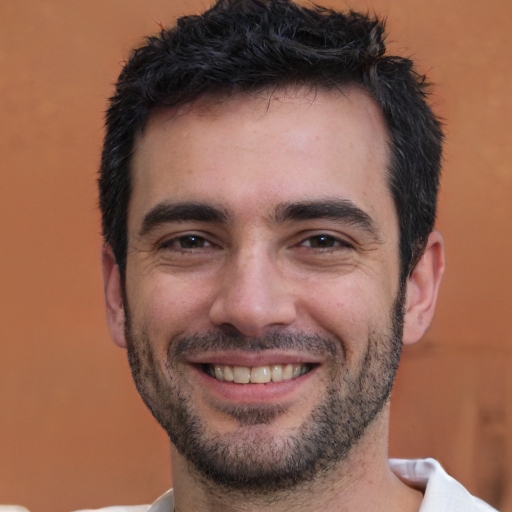The highest pharma paid CEOs in 2025 earned staggering compensation packages, primarily through a combination of salary, bonuses, and stock options. Topping the list is Uğur Şahin of BioNTech, who stands out dramatically among his global peers. The compensation landscape in the pharmaceutical industry reflects the sector’s robust financial growth, high demand for innovative therapies, and ongoing leadership transitions.
Most Paid Pharma CEOs 2024
| Name | Company | 2024 Compensation | Key Achievements |
|---|---|---|---|
| Uğur Şahin | BioNTech | $287 million | mRNA innovation, global vaccine leadership |
| David Ricks | Eli Lilly | $29.2 million | Zepbound launch, expansion in Alzheimer’s, deals |
| Albert Bourla | Pfizer | $24.6 million | Oncology approvals, cost restructuring |
| Joaquin Duato | Johnson & Johnson | $24.6 million | Exceeded sales/earnings, R&D pipeline |
| Robert Bradway | Amgen | $24.4 million | Strategic M&A, obesity therapies |
| Daniel O’Day | Gilead | $23.7 million | HIV innovations, cell therapy investments |
| Robert Davis | Merck | $23 million | Pipeline diversification, major trials |
Uğur Şahin (BioNTech): Leading the Pack
Uğur Şahin, CEO of BioNTech, secures the number one spot amongst pharma executives with an astonishing compensation of $287 million in 2024. The bulk of Şahin’s income came from exercising stock options granted in 2019, capitalizing on BioNTech’s meteoric rise during the COVID-19 pandemic. This payout is more than nine times higher than the next highest-paid pharma CEO, setting a new benchmark in industry compensation. Şahin’s leadership helped establish BioNTech at the forefront of mRNA vaccine development, not only for infectious diseases but also cancer immunotherapies, a testament to his transformative impact on medical science.
David Ricks (Eli Lilly): The Top US Earner
David Ricks of Eli Lilly follows as the highest-paid pharma CEO in the United States, with total 2024 compensation reaching $29.2 million. This represented a 10% increase from his previous year’s pay and reflected Eli Lilly’s highly successful year. Under Ricks, Eli Lilly overcame supply chain challenges, secured regulatory approvals for blockbuster drugs in Alzheimer’s and Crohn’s disease, and completed strategic acquisitions such as Morphic Holdings. Ricks also drove the company’s aggressive expansion into obesity and diabetes markets with the breakthrough medicine Zepbound, contributing to the company’s 32% revenue surge.
Albert Bourla (Pfizer): Modernization and Streamlining
Pfizer’s CEO, Albert Bourla, comes in next with a 2024 compensation package of $24.6 million, thanks primarily to stock options and incentive awards. Bourla steered Pfizer through a period of significant restructuring, trimming costs by $4 billion and overseeing 14 regulatory approvals for new oncology and specialty drugs. His overall compensation is set to be $23.4 million for 2025, as Pfizer tightens its operations and pivots to new post-pandemic growth levers.
Joaquin Duato (Johnson & Johnson): Strategic Consistency
Joaquin Duato’s leadership at Johnson & Johnson earned him $24.6 million in total pay in 2024. Despite a 14% dip compared to 2023, Duato maintained strong operational results, exceeding targets in sales, earnings, and free cash flow. His compensation included a substantial annual bonus and long-term incentives, reflecting the company’s continued portfolio diversification and robust R&D pipeline.
Robert Bradway (Amgen): Focused Expansion
Amgen’s Robert Bradway received $24.4 million in 2024, reflecting his strategic acquisition of Horizon Therapeutics and expanded manufacturing capabilities in North Carolina. Bradway’s focus on new therapeutics in obesity and cardiovascular medicine saw the company making headway to compete with market leaders and triggered major investments into research and infrastructure.
Daniel O’Day (Gilead Sciences): Advancing HIV Therapies
Daniel O’Day, CEO of Gilead, totaled $23.7 million in 2024 compensation, guided by a 5% pay increase. O’Day oversaw Gilead’s launch of a twice-yearly HIV therapy and stable growth in the company’s core antiretroviral portfolio. Despite workforce reductions linked to realignment, his strategic decisions around next-generation antivirals and cell therapy investments underscored his value to Gilead’s future trajectory.
Robert Davis (Merck): Pipeline Strength
At Merck, Robert Davis earned $23 million in 2024, with compensation reflecting pivotal developments in oncology, immunology, and global acquisitions. As Merck faces patent expirations for its leading drug Keytruda, Davis’s focus has been on diversifying revenue and accelerating late-stage clinical trials for new pipeline assets.
Notable Pay Trends: Gender Dynamics and Globalization
Notably, among the top 10 highest-paid pharma CEOs, only two are women. Emma Walmsley of GSK is projected to earn as much as $27.2 million in 2025, marking a 107% increase to better align with market peers. Vertex Pharmaceuticals’ Reshma Kewalramani also stands out, securing the eighth spot with $21.5 million in 2024.
Pharma executive pay is remarkably global, with strong showings from Europe and the US. While compensation packages vary, most feature high-value stock options and long-term incentives tied to both company and individual performance.
The Rationale Behind High Compensation
High CEO compensation in pharma is largely justified by the industry’s demanding requirements for leadership, risk-taking, and scientific innovation. Executives at this level are tasked not only with driving blockbuster drug launches and ensuring regulatory successes but also with responding to shifting global health priorities, from pandemics to the growing obesity epidemic. A significant proportion of their compensation is linked to performance, stock appreciation, and the ability to steer large-scale R&D initiatives that have sweeping impacts on revenues and public health.
*Note: Most recent available full-year compensation data (2024) cited, with projections for 2025 where indicated.
Looking Ahead
As the pharmaceutical sector evolves, expect CEO pay to remain in the spotlight, reflecting a combination of shareholder expectations, scientific breakthroughs, and global health crises. Scrutiny over pay equity, gender representation, and pay-for-performance standards is likely to intensify as well, shaping the next generation of leadership in the industry.
The gap between the highest earners like Uğur Şahin and their closest competitors not only illustrates the outsized rewards for driving monumental innovation in biotech but also highlights the transformative impact of strategic decision-making at the executive level across the entire healthcare landscape.
Related Post –
Top Pharmaceutical Companies & R&D Budgets in 2024–2025

Marvin O. Doran is a healthcare and life sciences research specialist with extensive experience in analyzing pharmaceutical pipelines, biotechnology breakthroughs, and medical device innovations. He writes data-driven, SEO-optimized market reports and in-depth company profiles to help industry professionals, investors, and researchers stay informed about the latest trends in global healthcare markets.
